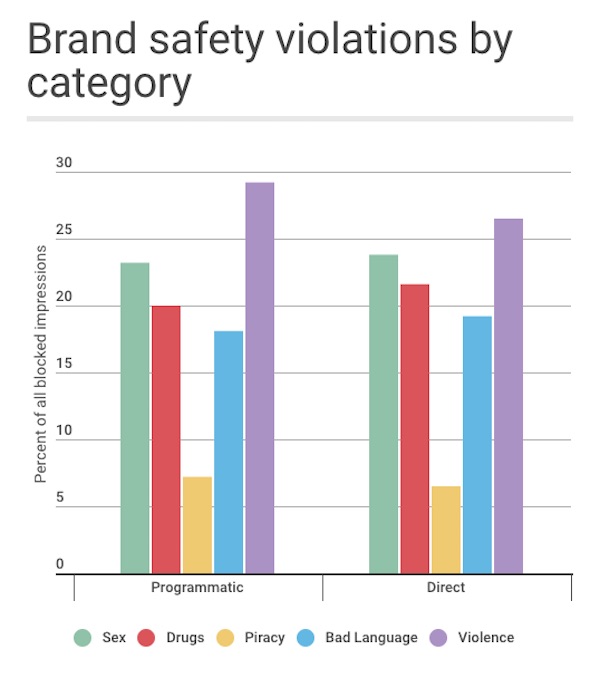Thanks to digital skullduggery, brand safety remains hotter than the devil’s anvil.
From the stump speeches of Procter & Gamble’s Marc Pritchard to the role of ad tech in funding misleading content to YouTube’s multiple ad scandals, the perils of digital media buying were on full display throughout 2017. Here are five charts that summarize the state of brand safety.
Brands claim responsibility
Whether you’re examining brand safety, fraud or data leakage, there’s plenty of blame to go around the complex ad-supply chain whenever a snafu arises. But brands have more to lose than others if their ads appear next to questionable content.
A survey of 30 brand marketers by Digiday+ showed that brands place more responsibility on themselves than on agencies, vendors or publishers, when it comes to maintaining brand safety. Marc Goldberg, CEO of anti-ad fraud vendor Trust Metrics, said brand advertisers should be leading the conversation on brand safety because if they don’t care about it, nobody else will.

YouTube’s brand pullouts
In March, brands like AT&T and Verizon took their ads off YouTube after The Times of London published an exposé that showed brand ads appearing in videos that promoted terrorism. Although most of the brands that pulled their ads from YouTube were back on the platform within a few months, posturing surrounding this event catapulted brand safety into elite buzzword territory.
The concept of brand safety has been around for years, but as seen in the Google Trends graph below, searches for brand safety peaked in March.
Violent content is widespread
From drugs to piracy to sex, there is a lot of content on the internet that advertisers try to distance themselves from. Violence is the category that ad-verification company Integral Ad Science blocks, most often for brand-safety reasons, for its advertiser clients.
Travis Lusk, vp of global sales strategy at IAS, said advertisers aren’t necessarily more sensitive to violence in content than they are to sex content or illegal downloads. Compared to other touchy topics, there just happens to be more content across the web that gets categorized as violent.

Brand-safety tactics
In November, video ad platform Teads surveyed 100 CMOs and vps at large brands about brand safety. Nearly 80 percent of them said they are more concerned about brand safety than ever before.
About half of the survey respondents said they had reviewed their agency and vendor contracts over the past year. More than a third said they layered on more third-party ad measurement to their campaigns.
“Marketers are stepping up to take control over the way their money is spent,” said Forrester analyst Susan Bidel.

Programmatic perils
IAS found that across display and video for both mobile and desktop, programmatic buys have a greater likelihood of exposing brands to unsafe content than direct buys. This makes sense, given that with direct deals, brands know who they are working with. Programmatic platforms, on the other hand, are engineered to bring ads to thousands of publishers simultaneously, and the long-tail sites featured on these platforms offer cheap scale at the price of appearing next to low-quality or sensational content.

As Pritchard noted in a recent interview with Digiday: “We’ve still got to do work on brand safety.”
More in Marketing

Agencies create specialist units to help marketers’ solve for AI search gatekeepers
Wpromote, Kepler and Jellyfish practices aim to illuminate impact of black box LLMs’ understanding of brands search and social efforts.

What AI startup Cluely gets — and ad tech forgets — about attention
Cluely launched a narrative before it launched a tool. And somehow, it’s working.

Ad Tech Briefing: Start-ups are now table stakes for the future of ad tech
Scaled ad tech companies need to maintain relationships with startups, when the sector is experiencing ongoing disruption due to AI.





